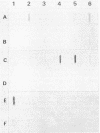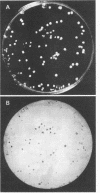Abstract
Pseudomonas syringae pv. tomato, the causal agent for bacterial speck of tomato, produces the phytotoxin coronatine. A 5.3-kilobase XhoI fragment from the chromosomal region controlling toxin production was cloned into the plasmid pGB2, and the resulting recombinant plasmid, pTPR1, was tested for its ability to serve as a diagnostic probe for P. syringae pv. tomato. In a survey of 75 plant-associated bacteria, pTPR1 hybridized exclusively to those strains that produced coronatine. The detection limit for this probe, which was labeled with the Chemiprobe nonradioactive reporter system, was approximately 4 × 103 CFU of lesion bacteria. During the 1989 growing season, a total of 258 leaf and fruit lesions from nine tomato fields were screened for P. syringae pv. tomato by using pTPR1 and the culture method of detection. The best agreement between the two methods, 90%, occurred early in the season with samples taken from relatively young (5-week-old) plants. Young plants also had a higher percentage of P. syringae pv. tomato-positive lesions. P. syringae pv. tomato was the only coronatine producer recovered from the nine tomato fields. All 244 P. syringae pv. tomato strains isolated during this study reacted strongly with the probe. The P. syringae pv. tomato population of healthy field tomato leaves was determined by a pTPR1 colony hybridization procedure. Every probe-positive colony that was isolated and characterized was identified as P. syringae pv. tomato. The pTPR1 probe should expedite disease diagnosis and facilitate epidemiological studies of this pathogen. It also should aid in screening transplant seedlings for bacterial speck infestation.
Full text
PDF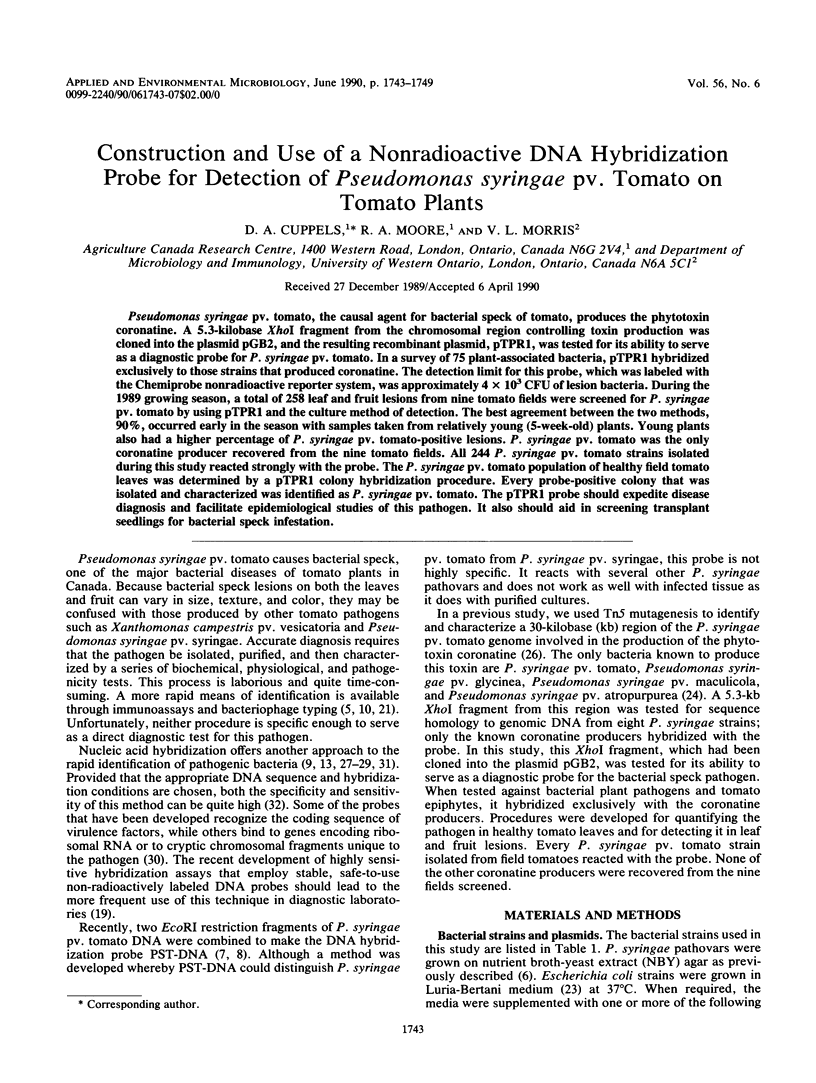
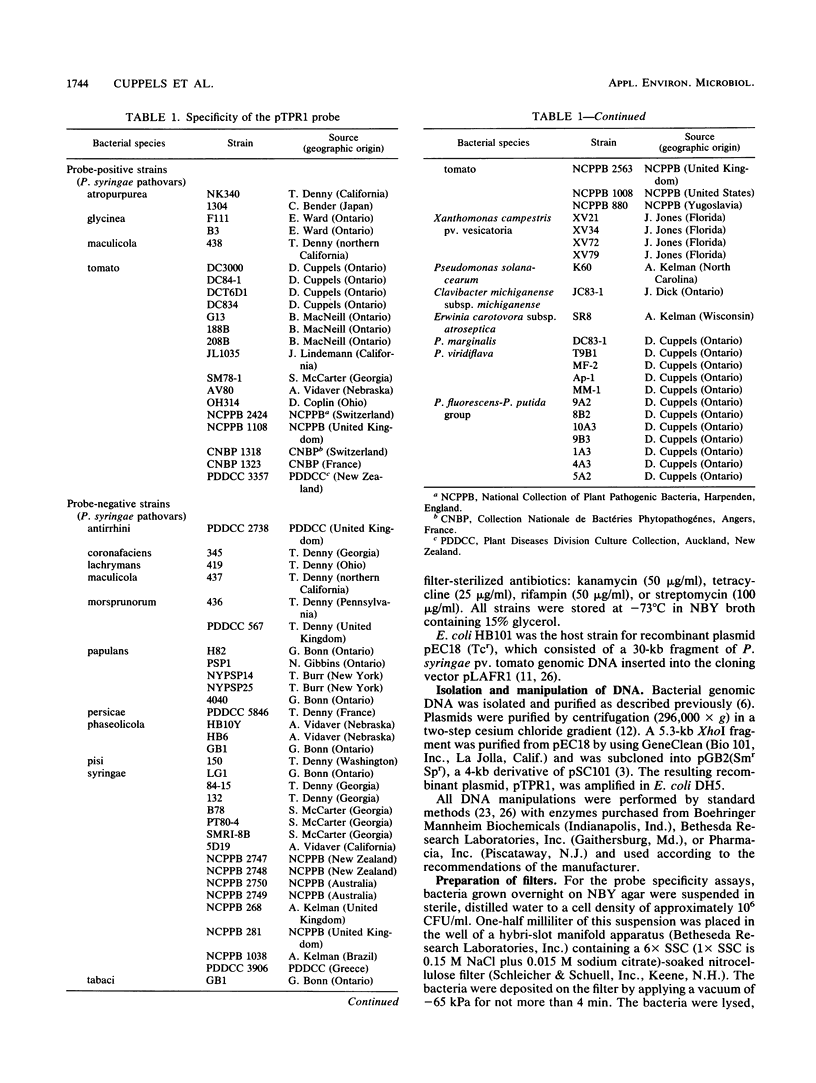
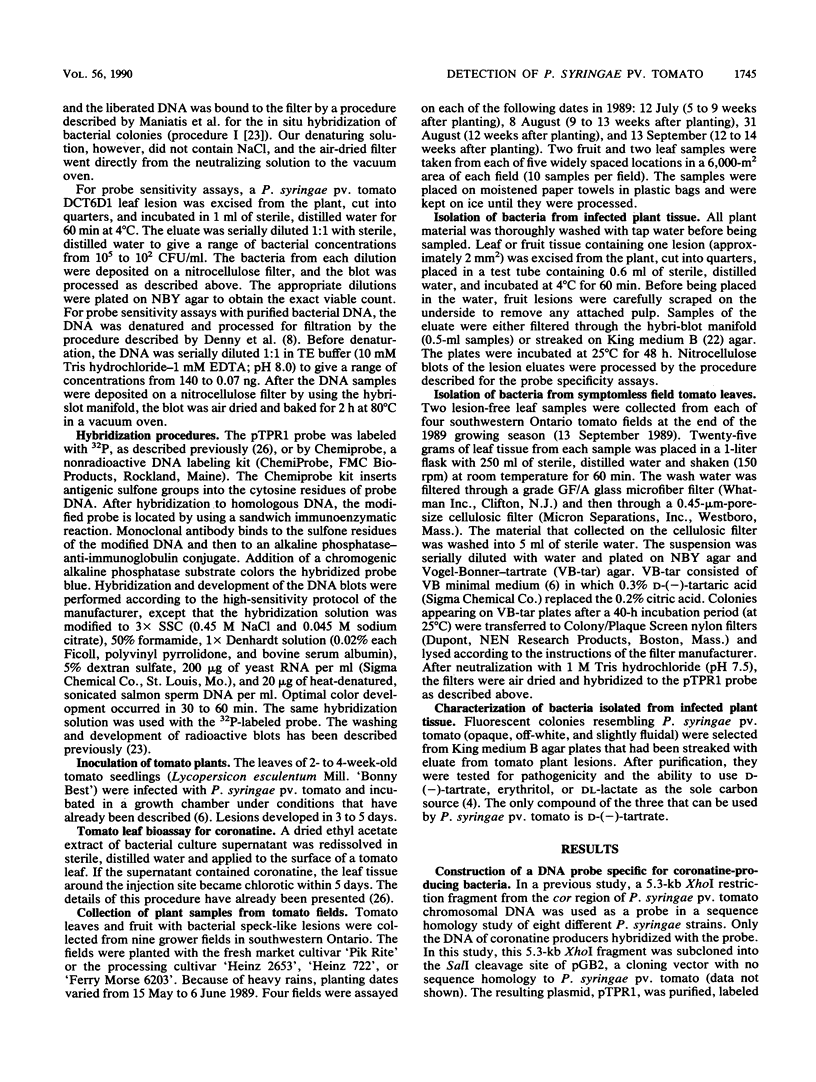
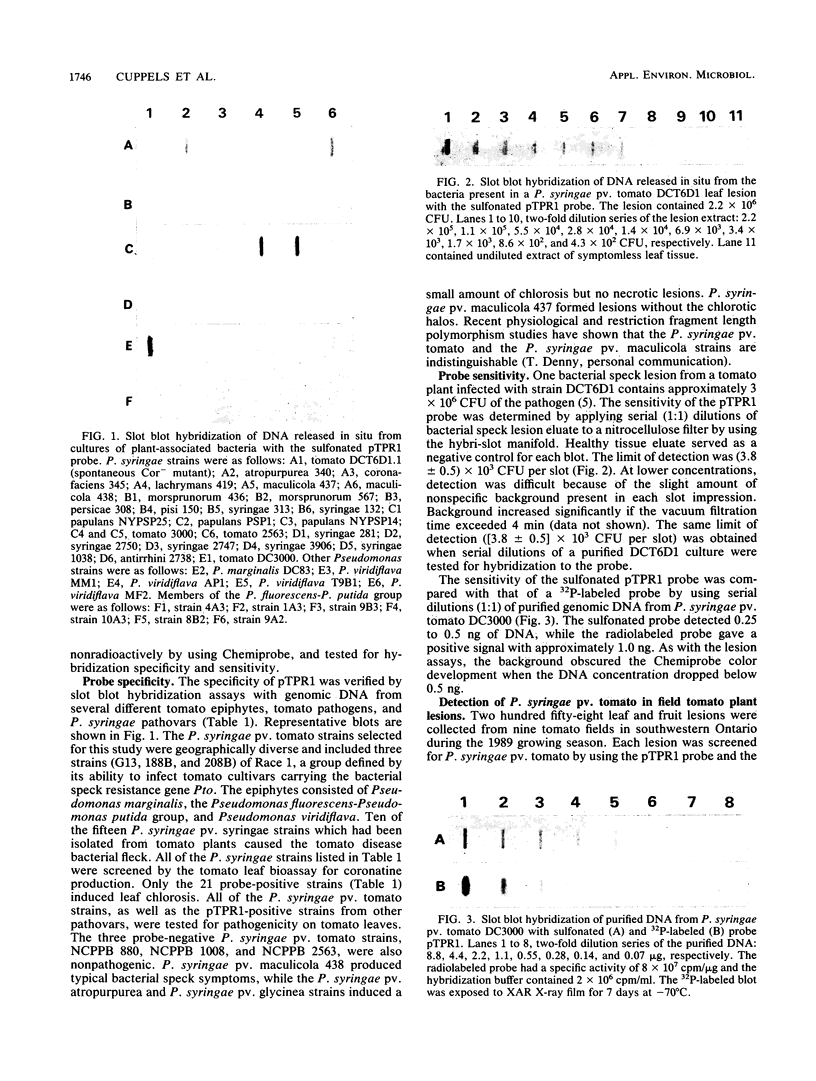
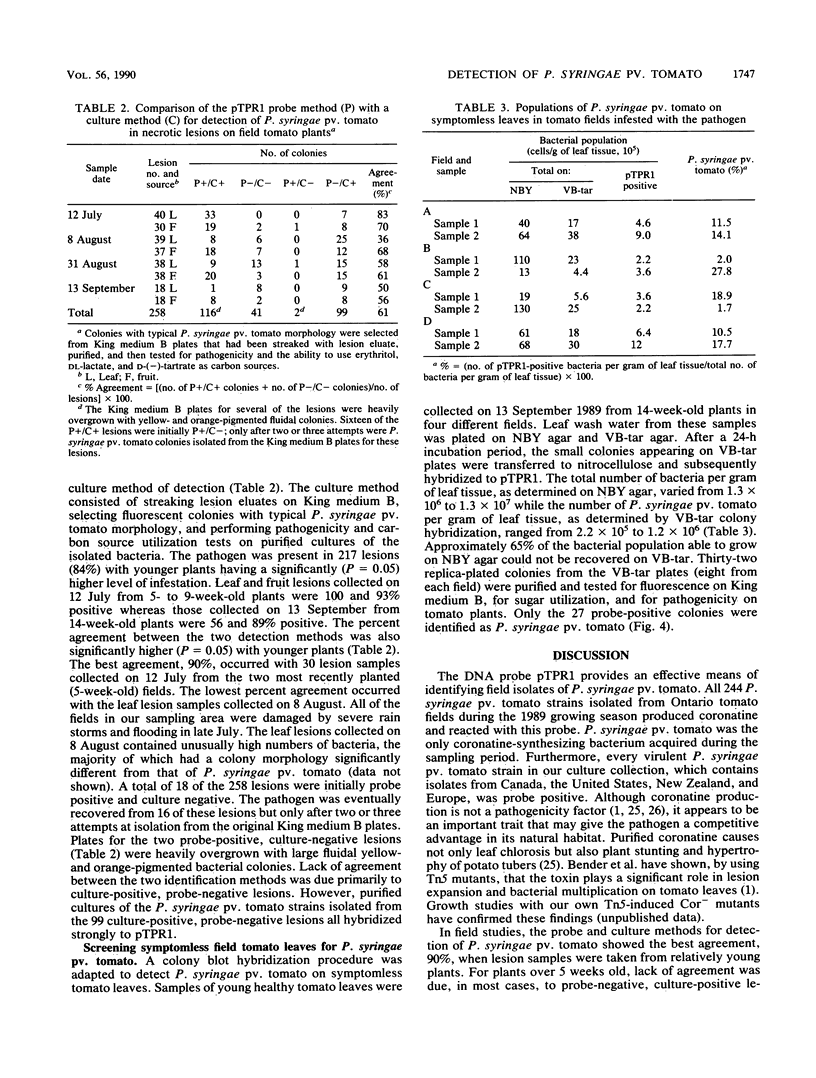
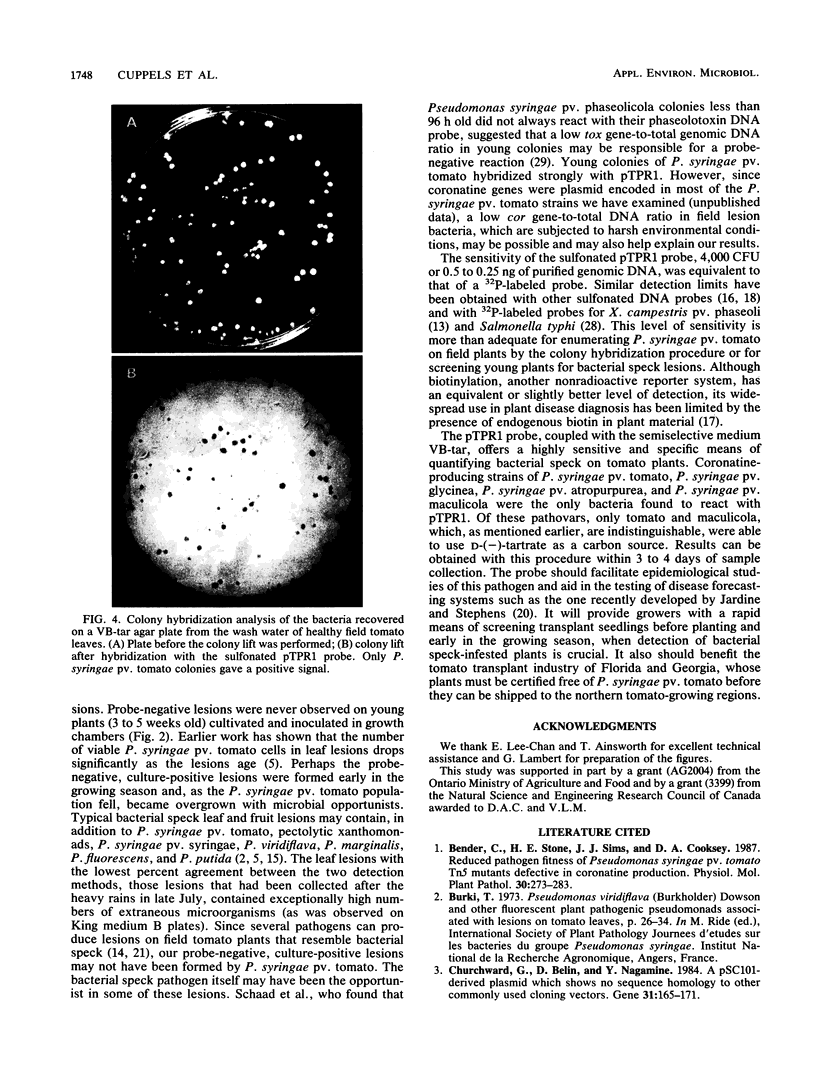
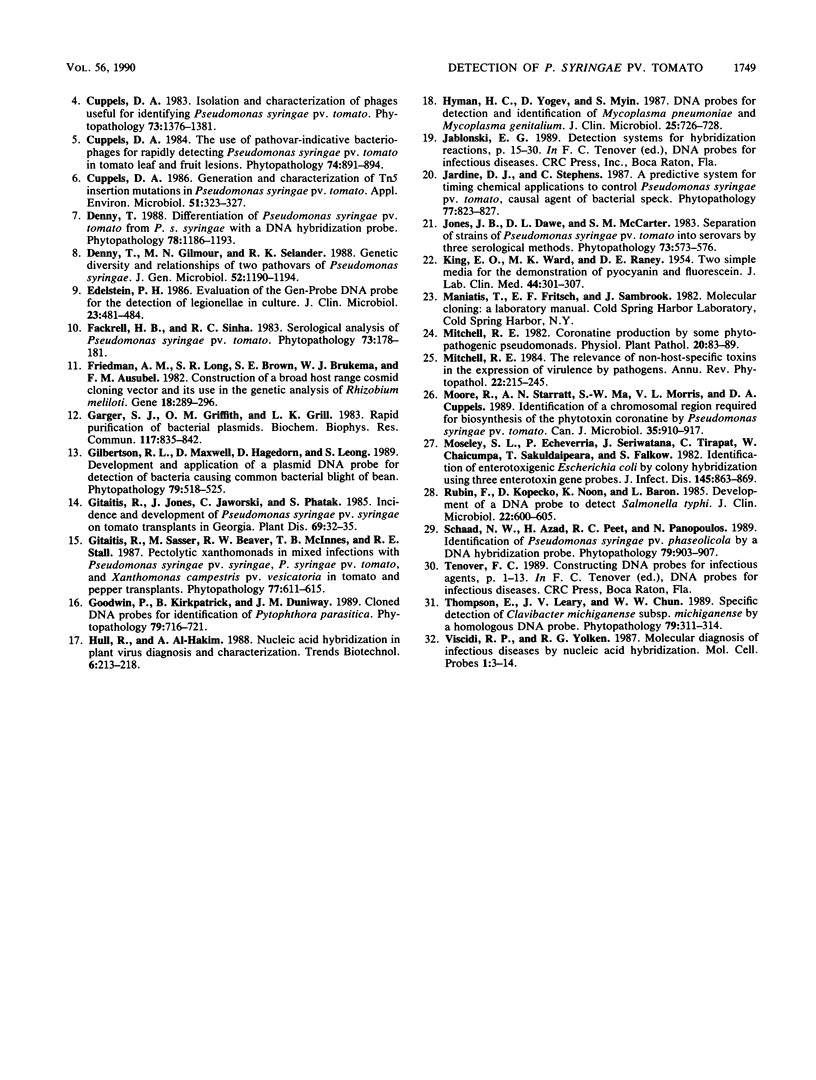
Images in this article
Selected References
These references are in PubMed. This may not be the complete list of references from this article.
- Churchward G., Belin D., Nagamine Y. A pSC101-derived plasmid which shows no sequence homology to other commonly used cloning vectors. Gene. 1984 Nov;31(1-3):165–171. doi: 10.1016/0378-1119(84)90207-5. [DOI] [PubMed] [Google Scholar]
- Cuppels D. A. Generation and Characterization of Tn5 Insertion Mutations in Pseudomonas syringae pv. tomato. Appl Environ Microbiol. 1986 Feb;51(2):323–327. doi: 10.1128/aem.51.2.323-327.1986. [DOI] [PMC free article] [PubMed] [Google Scholar]
- Edelstein P. H. Evaluation of the Gen-Probe DNA probe for the detection of legionellae in culture. J Clin Microbiol. 1986 Mar;23(3):481–484. doi: 10.1128/jcm.23.3.481-484.1986. [DOI] [PMC free article] [PubMed] [Google Scholar]
- Friedman A. M., Long S. R., Brown S. E., Buikema W. J., Ausubel F. M. Construction of a broad host range cosmid cloning vector and its use in the genetic analysis of Rhizobium mutants. Gene. 1982 Jun;18(3):289–296. doi: 10.1016/0378-1119(82)90167-6. [DOI] [PubMed] [Google Scholar]
- Garger S. J., Griffith O. M., Grill L. K. Rapid purification of plasmid DNA by a single centrifugation in a two-step cesium chloride-ethidium bromide gradient. Biochem Biophys Res Commun. 1983 Dec 28;117(3):835–842. doi: 10.1016/0006-291x(83)91672-8. [DOI] [PubMed] [Google Scholar]
- Hyman H. C., Yogev D., Razin S. DNA probes for detection and identification of Mycoplasma pneumoniae and Mycoplasma genitalium. J Clin Microbiol. 1987 Apr;25(4):726–728. doi: 10.1128/jcm.25.4.726-728.1987. [DOI] [PMC free article] [PubMed] [Google Scholar]
- KING E. O., WARD M. K., RANEY D. E. Two simple media for the demonstration of pyocyanin and fluorescin. J Lab Clin Med. 1954 Aug;44(2):301–307. [PubMed] [Google Scholar]
- Moseley S. L., Echeverria P., Seriwatana J., Tirapat C., Chaicumpa W., Sakuldaipeara T., Falkow S. Identification of enterotoxigenic Escherichia coli by colony hybridization using three enterotoxin gene probes. J Infect Dis. 1982 Jun;145(6):863–869. doi: 10.1093/infdis/145.6.863. [DOI] [PubMed] [Google Scholar]
- Rubin F. A., Kopecko D. J., Noon K. F., Baron L. S. Development of a DNA probe to detect Salmonella typhi. J Clin Microbiol. 1985 Oct;22(4):600–605. doi: 10.1128/jcm.22.4.600-605.1985. [DOI] [PMC free article] [PubMed] [Google Scholar]
- Viscidi R. P., Yolken R. G. Molecular diagnosis of infectious diseases by nucleic acid hybridization. Mol Cell Probes. 1987 Mar;1(1):3–14. doi: 10.1016/0890-8508(87)90003-x. [DOI] [PubMed] [Google Scholar]




